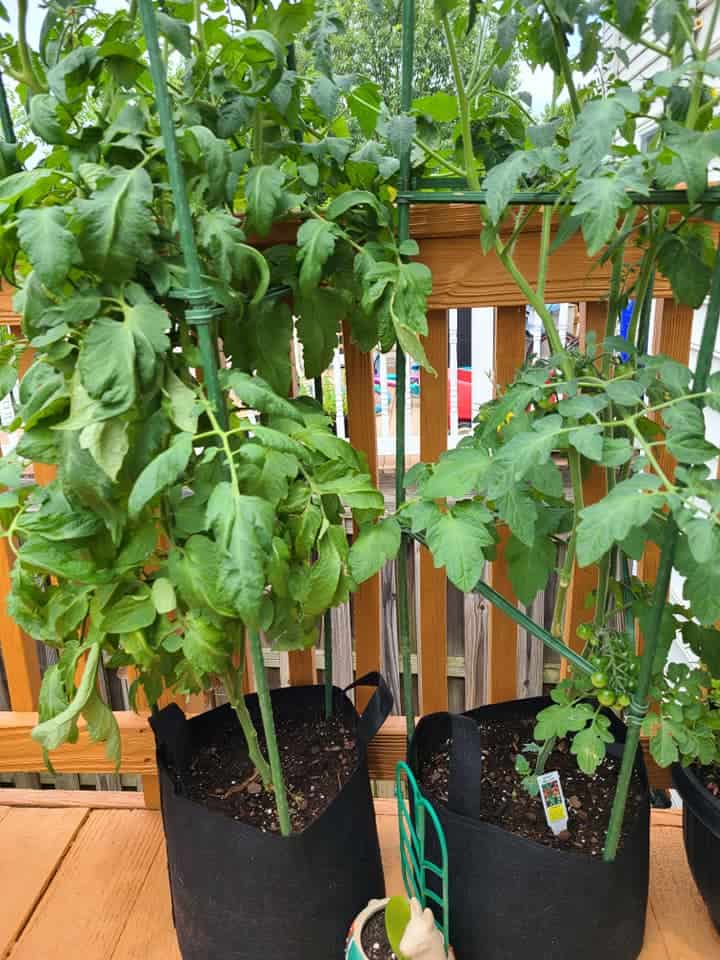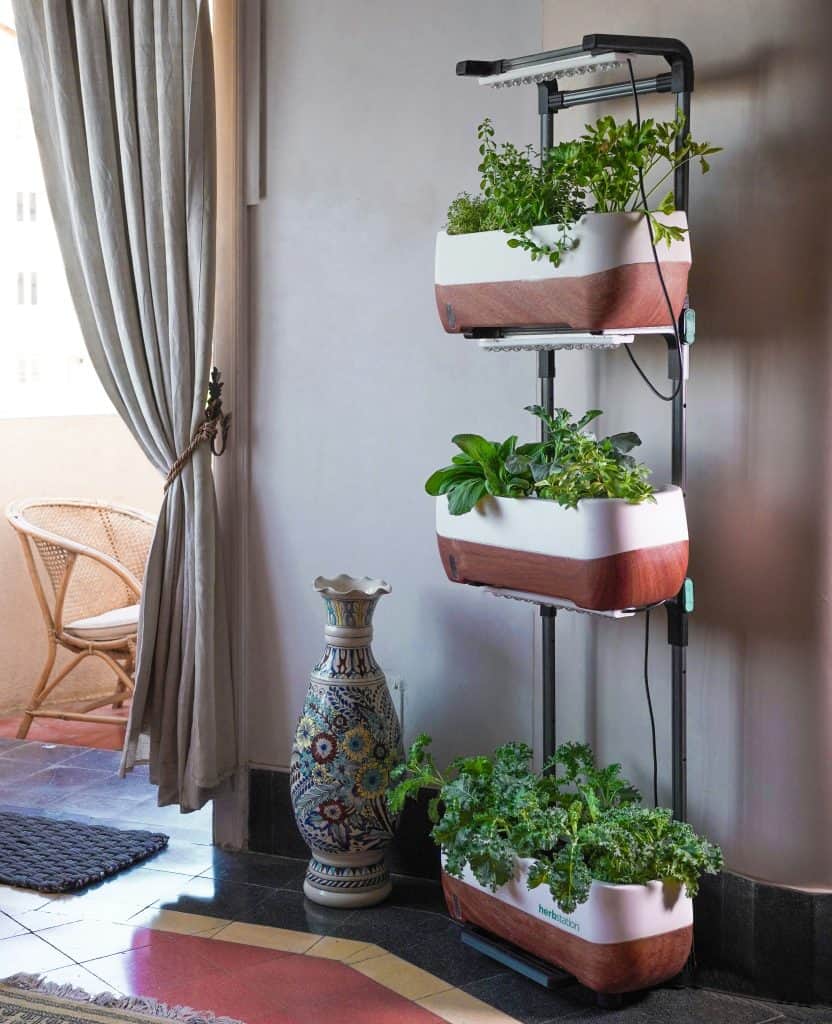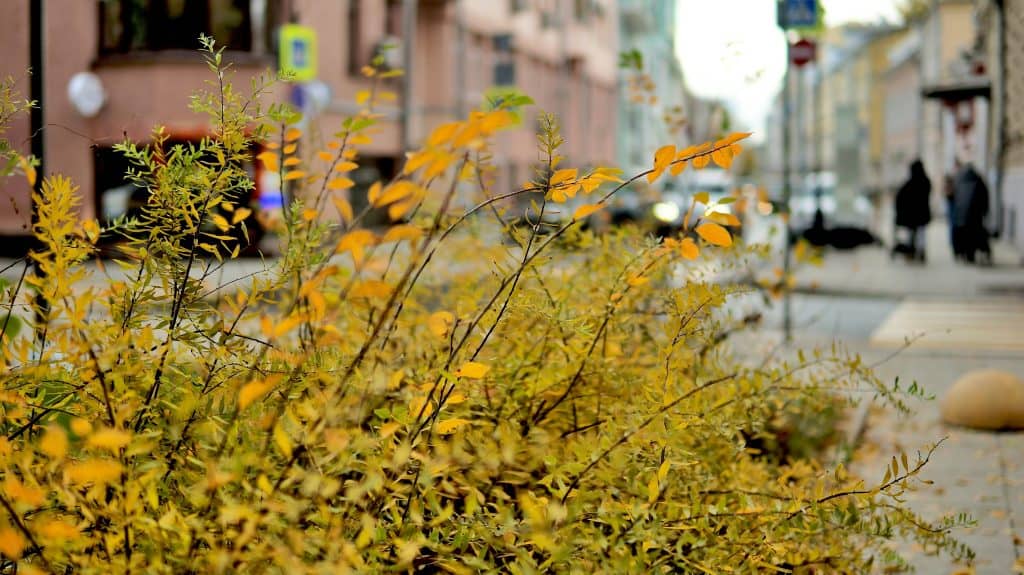Let’s get one thing straight right out the gate: you can homestead in the middle of a city. Yes, even if you live on the third floor. Even if your only outdoor space is a windowsill you share with your cat.
Homesteading isn’t just for folks with barns and big plots of land. It’s a mindset. A way of doing more with what you have, wherever you are.
You want to grow your own food? Great. Want to rely less on big-box stores and more on your own hands? Even better. Want chickens? Okay, that one depends on your city laws but still doable.
This list isn’t here to overwhelm you. It’s a grab bag of practical, tested, and actually achievable things you can start doing now.
In the city. With zero acreage and probably not a ton of time either.
Pick one or two. See what sticks. You don’t have to go full pioneer overnight. Just start where you are (with what you’ve got).
1. Grow Food Literally Anywhere

A windowsill. A fire escape. That one patch of sunlight that lands on your kitchen counter for two hours a day. Doesn’t matter if there’s light, you can grow something.
Microgreens are basically the entry-level cheat code. They’re quick, ridiculously easy, and you can grow them in a takeout container. Just scatter seeds, spritz with water, and boom – greens in a week.
Herbs? Totally doable. Basil, chives, mint, even thyme. Especially if you’ve got a sunny window or a railing to hang a few pots on. And leafy greens like spinach or arugula don’t need much depth, so even shallow trays work.
You’re not aiming for full food independence here. But the first time you snip your own chives for scrambled eggs? You’ll get it.
2. Container Gardening Is Underrated

Forget about having a yard. Buckets. Grow bags. Old storage totes. Even milk crates lined with landscape fabric. That’s your new garden.
Tomatoes love containers especially cherry varieties. Peppers do too. And herbs basically throw a party in small pots. Just make sure there’s drainage. (Seriously, poke holes. Lots of holes.)
You can line your balcony railing with containers, stack them on shelves, or cluster them on your front steps like a tiny jungle. Got a sunny driveway? That works too.
And if you're tight on space, think “deep” instead of “wide.” Root veggies like carrots or radishes can thrive in 5-gallon buckets. One plant per bucket isn’t inefficient – it’s focused.
Also: containers are mobile. Which means if the sun shifts or a freak hailstorm hits, you can just… move your garden. Try doing that with in-ground beds.
3. Raised Beds in Any Space You Have

Got a tiny patch of ground by the sidewalk? A concrete slab behind the garage? Access to a flat-ish rooftop? Congratulations – you can build a raised bed.
Raised beds are ideal in cities where the soil is… questionable. Lead contamination, construction debris, mystery junk – it’s all pretty normal in urban dirt. Raised beds let you skip that mess entirely and bring in clean soil.
They also help with drainage, weed control, and plant spacing. Plus, they look neat. Like, tidy-garden-in-a-chaotic-world neat.
You don’t need fancy lumber or a truckload of tools. Cinder blocks, reclaimed wood, even stacked stones can work. Just build up, fill it with good stuff, and start planting.
4. Consider Vertical Gardening

You know those walls, fences, balcony rails, and awkward corners you keep ignoring? Yeah, those can grow food too.
Vertical gardening is one of those why-didn’t-I-start-this-sooner things. Stack planters, hang baskets, mount shelves. Use trellises made from old bed frames or salvaged metal rods. You can even train cucumbers or pole beans to grow up a railing.
Plants love vertical setups because they get more airflow and light. And it’s easier on your back. (You’ll thank yourself after day three of watering.)
Also: it looks awesome. A living green wall on your fire escape? That's art and dinner.
5. Composting Without the Smell

People hear “compost” and immediately imagine a smelly heap swarming with flies. Not in the city. Not if you do it right.
Worm bins (vermicomposting) are a thing of beauty. Tuck one under your kitchen sink or in a closet. Feed it veggie scraps. Let the worms do their thing. You get nutrient-rich compost and zero odor if you keep the balance right.
If worms aren’t your vibe, try a tumbler bin on your balcony. It keeps things tidy and turning it becomes oddly satisfying.
Some places even have community compost drop-offs – worth checking into if space is tight. You reduce food waste and feed your plants later. Full circle.
6. Raise Chickens

Yep, some city folks keep chickens. It’s not as wild as it sounds.
Many cities allow a few hens (never roosters – unless you want to meet your neighbors in court). Chickens give you fresh eggs, free entertainment, and compost-worthy manure.
You’ll need a secure coop, a bit of space (think 4–5 square feet per bird), and good predator protection even raccoons exist in cities.
And yes, they cluck. But it’s less noise than a barking dog or a neighbor’s lawn mower.
7. Can’t Do Chickens? Try Quail
Quail are like the introverts of the poultry world. Quiet. Small. Totally okay living in a rabbit hutch on your porch.
They lay eggs early, often, and with shocking reliability. (About one a day per bird.) And since they’re so compact, even people in apartments have found ways to raise them on balconies or in garages.
You’ll want to build or buy a proper enclosure, keep things clean, and give them a dust bath spot. That’s basically their spa day.
Bonus? In many places, quail don’t fall under the same strict animal laws as chickens. Always double-check, but you might be pleasantly surprised.
8. And If You’re Bold… Rabbits
Rabbits are a quiet, low-maintenance option for urban homesteading. No clucking, no early-morning crowing. Just soft thumps and twitchy noses.
You can raise them for manure (amazing stuff for gardens – doesn’t even need composting first) or for meat, depending on your goals and comfort level. Some folks just keep them as fertilizer-producing pets. That’s valid too.
They’re incredibly space-efficient. A well-built hutch on a patio or tucked behind the garage is enough. But don't forget legality. This varies wildly from place to place. Some cities are fine with it. Others? Not so much. Know your local ordinances before you jump in.
Keep their space clean, provide shade in summer, and make sure they’ve always got hay and fresh water. Do that, and they’re surprisingly low-maintenance.
9. Preserve Like a Granny (in a Good Way)

You don’t need a root cellar or an orchard to get into food preservation. A small freezer, a basic canning setup, or even a few clothespins and a sunny windowsill will do.
Dehydrating herbs is the easiest place to start. Hang bundles upside-down in a dry spot, crumble, store in jars. That’s it.
Canning? Once you’ve tried it, you’ll get hooked. Tomatoes, pickles, jam – preserving stuff you either grew or bought cheap in season feels weirdly satisfying. Plus, shelf-stable food is a flex.
And then there’s fermentation. Sauerkraut, kimchi, pickled onions. A little salt, a little waiting, and somehow… magic. It’s alive, it’s good for your gut, and it lasts forever in the fridge.
10. Cook From Actual Ingredients

There’s something about kneading dough with your hands or stirring a bubbling pot of soup that reconnects you with your food. No, really – it’s grounding.
Cooking from scratch doesn’t mean complicated. Start with things like bread (no-knead recipes exist for a reason), homemade broth, or plain yogurt. All of which taste miles better than store versions.
Not everything has to be made from scratch 100% of the time. But when you’ve got your own herbs growing on the windowsill and fresh broth in the fridge… you notice the difference.
It’s cheaper. It’s healthier. And slowly, it shifts how you shop, eat, and think about food in general.
11. Make Cleaners That Don’t Wreck Your Air

Vinegar. Baking soda. A splash of lemon juice or orange peel if you’re feeling fancy. That’s basically the foundation of homemade cleaning products.
Spray bottles with simple mixtures can tackle countertops, sinks, glass, even toilets. You avoid the overpowering chemical stink and mystery ingredients of store-bought stuff.
Want scent? Add essential oils like lavender, eucalyptus, or tea tree. Or just let the clean speak for itself.
Also: it’s way cheaper. Like, pennies-per-bottle cheaper. And if you reuse spray bottles or glass jars? Even better.
12. DIY the Little Stuff

Urban homesteading is also about doing for yourself wherever you can. Fixing instead of tossing. Repurposing instead of rebuying.
Learn to sew on a button. Patch jeans. Replace a busted drawer pull. Build a scrappy little shelf from a free pallet.
These aren’t just practical homesteading skills – they’re empowering. You stop waiting for someone else to solve every small problem and start handling it yourself.
YouTube tutorials are your friend. So are tool libraries, community workshops, or that one neighbor who owns everything and secretly loves helping.
13. Forage… Carefully

Yes, even in the city, wild edible plants are hiding in plain sight. Cracks in sidewalks. Edges of parks. Empty lots. They’re there.
Dandelion greens? Edible. Chickweed, purslane, wild garlic? All fair game – if you know what you're doing.
The key here is education. This is not a grab-and-go situation. You need to learn what’s edible, what’s toxic, and where it’s safe to pick.
Avoid spots near roads (hello, heavy metals) or recently sprayed lawns. Stick to cleaner green spaces and always cross-reference with a local field guide.
Once you start learning, you’ll see food everywhere. It’s a trip.
14. Buy Local Even If You Can’t Grow It All

Sometimes your basil dies. Sometimes your “garden” is a single aloe plant clinging to life. That’s okay.
Supporting local producers is still part of the homesteading mindset. Hit the farmers market. Join a CSA. Find a small urban farm that sells eggs or greens or honey.
You get fresher food, fewer chemicals, and your money actually helps a real person keep doing what they do.
Also? It connects you to your local food ecosystem which sounds a little crunchy, but it’s true. You stop being just a consumer. You become part of the loop.
15. Secondhand = Secret Weapon

Almost everything you need is already out there, just waiting to be rescued.
Jars, buckets, shovels, shelving, tools. All of it can be found through thrift shops, yard sales, flea markets, Craigslist, or Buy Nothing groups. People throw away so much useful stuff.
Used doesn’t mean junky. It means lived-in. Proven. Pre-broken-in. And way cheaper.
There’s also something satisfying about solving a need without spending money. Need seedling trays? Egg cartons and yogurt cups. Solved.
16. Catch Rain (If They Let You)
Rain barrels in the city aren’t just cute – they’re practical. And in some places, they’re totally legal.
You collect the water that falls on your roof or balcony. Use it to water your plants. That’s it. And suddenly, you’re saving money and doing something quietly revolutionary.
Check your local laws first – some areas have restrictions or guidelines (screens to prevent mosquitoes, overflow valves, etc.). Nothing deal-breaking.
You don’t need a big system. Even a 10-gallon barrel with a spout is helpful. Especially during dry spells, when your plants start looking personally offended.
17. Use the Sun (Even a Little Bit)
You don’t need a giant solar panel array and a battery bank. Just a few solar-powered tools can make a noticeable difference.
Stick a few solar lights in your container garden. Use a solar charger for your phone. Prop up a little solar fan near your seedlings to keep airflow moving.
It’s low-stakes but still meaningful. Every watt you don’t pull from the grid is a quiet win.
There’s something kind of magical about light you didn’t pay for. Free energy, right there on your porch.
18. Plant Things That Are Pretty and Edible

There’s no rule that says your front yard (or balcony or fire escape) can’t pull double duty. That border of rosemary? Also seasoning.
Those nasturtiums in a hanging basket? Totally edible – spicy, peppery little flowers that dress up a salad.
Tuck kale into flower beds. Grow strawberries in planters meant for petunias. Let sage bloom – it’s gorgeous and useful. This is called “edible landscaping,” and it’s one of the sneakiest, smartest ways to homestead in a city.
And if your neighbors ever ask? Just smile and tell them it’s ornamental.
19. Share Space: Community Gardens

If your apartment building doesn’t allow plants, or you’ve maxed out your balcony, there’s a good chance someone nearby is running a community garden.
You rent a plot (usually cheap), get access to shared tools and compost, and suddenly boom you’ve got space to grow whatever you want. Tomatoes, squash, maybe even sunflowers if you’re feeling bold.
But the best part? The people. Gardeners love talking about plants. You’ll trade advice, maybe some extra seedlings, and probably way more zucchini than you bargained for.
20. Learn a “Grandma Skill”

There’s something deeply satisfying about learning to do something the old way. Not because you have to but because you can.
Think sewing a ripped shirt instead of tossing it. Making herbal salves from calendula and oil. Baking sourdough that’s half science experiment, half tradition.
These skills are quiet power. They don’t take up much space, and you can learn them from books, neighbors, YouTube, or trial and error. (Mostly trial and error.)
And once you start picking them up, you’ll realize how much we’ve handed off to machines and stores and how easy it is to take some of it back.
Living the Homesteading Life – Right Where You Are
You don’t need land to homestead. You don’t need a barn, or a cow, or a pantry the size of a garage.
You just need intention. A willingness to try. To grow something. To make something. To do just a little more for yourself than you did yesterday.
Whether that’s growing thyme in a coffee can, joining a local CSA, or finally learning to darn socks – it all counts.
Start small. Keep going. And know that every little effort adds up to a lifestyle that’s more connected, more resilient, and honestly a lot more satisfying.
Frequently Asked Questions (FAQs)
Got questions? You're not alone. Urban homesteading looks a little different for everyone, so here are some quick answers to the most common “Can I really do this?” moments.
1. Can I really raise animals in the city?
Sometimes, yes. Chickens, quail, and rabbits are often allowed (with rules). Always check local ordinances before bringing home anything with feathers or fur.
2. What’s the easiest plant to grow indoors?
Green onions. Stick the white ends in water and they regrow almost endlessly. No soil needed.
3. Will composting indoors make my apartment stink?
Not if it’s done right. Worm bins and bokashi systems are designed to be odor-free. If it smells, something’s off.
4. I have zero outdoor space – what can I do?
Plenty! Indoor herbs, window microgreens, DIY cleaners, cooking from scratch, preserving food, sewing, and more. Homesteading isn’t all dirt and chickens.
5. Do I need to do all of this to call myself a homesteader?
Not even close. Pick what works. Leave what doesn’t. Homesteading is about progress, not perfection.
Ready To Transform Your Garden?
Are you looking for the best way to layout your garden beds? Maybe you're feeling a bit stuck on how to make the most of your space?
We’ve got you covered! Check out our 101+ Garden Bed Layout Ideas for your next raised bed project. This guide is filled with creative and practical ideas that can help you design a garden that fits your style, whether you’re just starting out or have been gardening for years.
Get your copy today and get inspired to bring your gardening dreams to life.

